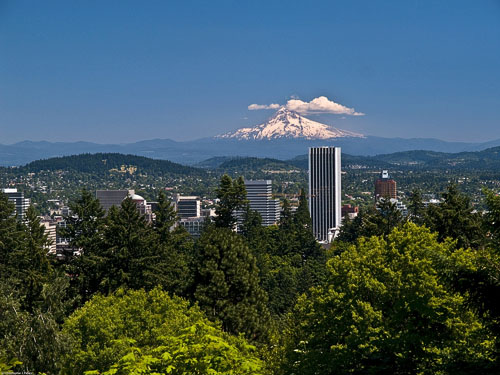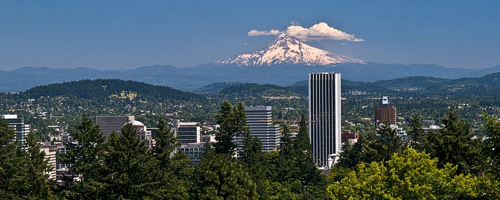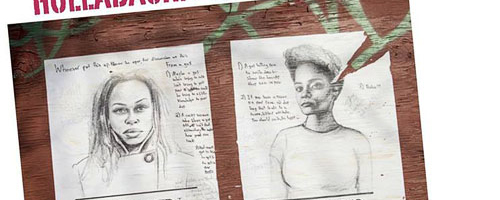Several years ago, geography professor Joseph Poracsky created a class called “The Urban Forest.” Recently, Poracsky became the department chair, and adjunct geography professor Jennifer Karps took over the class.
Class profile: ‘The Urban Forest’

Several years ago, geography professor Joseph Poracsky created a class called “The Urban Forest.” Recently, Poracsky became the department chair, and adjunct geography professor Jennifer Karps took over the class.
Karps has been an adjunct professor in the geography department since 2008. She also works for the City of Portland as part of a program in the Environmental Services Bureau that plants trees to manage storm water. She has been working with Portland’s urban forest for 11 years.
The class is a 400/500-level geography class that begins by looking at the theoretical context of the topic and exploring answers to several questions: What are trees? What is a forest? What is ecology? What is urban ecology? Then the class examines trees in the urban environment more directly.
“We look at the benefits they provide, and how humans interact with them. We…begin to talk about the management of urban trees and the challenges that come with managing an urban forest,” Karps said.
“The city’s trees provide a wealth of tangible and intangible benefits to the residents,” Karps added. “Yet integrating trees into the fabric of the built environment presents challenges in maximizing the benefits they provide while limiting management and liability costs.”
As such, the class also considers the liabilities that come with living with trees, and the relationship between trees and people. Along with this they look at volunteerism and the many ways people can get involved with trees.
The class meets twice a week for an hour and 50 minutes. Karps said the class is mainly lecture, initially. But as they delve deeper into the topic, students get more interactive and the class leans more toward discussion.
Karps said there are four major assignments throughout the term, one of which is to read a journal article that has something to do with urban forests. The field is very broad, so the students all get to look into something that interests them. In the last five weeks of the term, students present to the class.
“[I]nstead of only hearing from me, they’re also hearing from their peers,” Karps said. Since the articles students choose vary, discussion topics range from social to ecological.
Karps has many colleagues at her job with the City of Portland that work within the urban forest field. She gets many of these colleagues to come to class and lecture on the topics on which they are experts. With the range of information provided by this mix of sources, Karps believes that her students are getting a much broader view of urban forestry.
An important thing to understand about this class is how it qualifies as a geography course. “The geographer’s lens is really helpful because geographers look [at] patterns across space and through time, so that’s natural of the urban forest,” Karps said.
Some of the geographical questions the class looks at include how the urban forest on the east side of Portland differs from that on the west side; the differences between downtown and East Moreland, or Mount Tabor or Forest Park; and how the urban forest in Portland is different than those in Gresham or
the Gorge.
Karp said that looking at these spatial patterns helps one to better understand what the urban forest is, and can help the urban forest to be successful in the long run.





